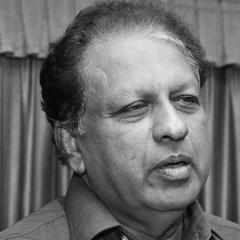Kerala is accustomed to bad news on a daily basis. Newspapers are replete with stories of murders, rapes, accidents, violence and the rest. Some say that this is because good news is no news and only the bad news gets prominence. The readers are becoming insensitive to crimes and accidents of the most horrible nature and after a few days, turn to even a bigger tragedy. All of them end up in interminable investigations, the results of which are never published.
The deep malaise in Kerala's education system has been exposed with the tragic death of Shehala Sherin, 10, after a snakebite reported from a government school in Sultan Bathery. It demonstrated how hollow are our claims to leadership in education, health and civilised behaviour. Once again, the world was aghast at the contradictions between statistical claims like total literacy, high-standard school education, laced with high tech and the reality. What happened at the school might not happen in any part of the civilised world. The reaction of the rest of the world was the same as in the case of Sabarimala: "Why do the bright Malayalees behave irrationally and cruelly in moments of crises?" They will again be confused between literacy and brilliance.
The police say Shehala’s foot got stuck in a hole on the floor of her class and by the time her foot was pulled out, there were two blood spots on it. According to her parents and classmates, the teachers at the school refused to rush her to the hospital. Even though some students had raised suspicion about the possibility of snakebite, teachers insisted that the red spots were due to the sharp edges of the hole on the floor. The girl was taken to a hospital only after her father reached the school almost 30 minutes after the incident took place.
Shehala was initially taken to a private hospital in Sultan Bathery and then to a nearby sub-district hospital. She was then referred to the Kozhikode Medical College, far away. As her condition worsened, she was again taken to a private hospital where she was declared brought dead. She became a martyr of our education system, which lacks proper infrastructure, teachers’ training, technology, accountability, health facilities and civic responsibility.
In Kerala, an ideal student is someone who eats little, has torn clothes, dog’s sleep, stork’s meditation and other signs of poverty. The idea is that low living and high thinking will promote knowledge and this centuries-old view is still held sacred. The recent claim by the state government is that thousands of government schools have been made "high tech’, which means basically that black boards have been replaced by white boards. Electricity and internet connections are still primitive and most facilities are rarely used. Schools in rural areas are located in inaccessible spots, surrounded by rivers and forests. Accidents and wildlife challenges are very common. Snake holes on school floors are not taken seriously. Even if there is no high living, safe living should be ensured at our educational institutions.
The response of the teachers to the tragic incident also revealed a tragic flaw in our education system. This also exposes a weakness in the training of teachers. Teachers' training should not be pedagogy alone. Since teachers are next only to the parents in protecting the rights of the child and their lives, they should be trained to be like lifeguards on the beach. They should be equipped with the mentality and instruments to protect the children. The way the teachers waited for the parents to appear before moving the girl to the hospital was not only deplorable but also criminal. The teachers in many countries are trained to deal with all emergencies involving children.
According to the famed 'Kerala Model of Development', the state has achieved success in matching the statistics of the developed world. But nowhere else in the developed world would have a girl bitten by snake sent from pillar to post without giving her anti-venom treatment!
Absence of autonomy in decision-making is another lacuna in the education system in Kerala. With autonomy comes accountability and no teacher or doctor would shirk responsibility if there was autonomy. They would have exercised their responsibility if only they had accountability for their actions and swift retribution would have followed if they did not.
The teachers have their own tales of woe. A young Assistant Professor lamented recently that over the last 10 years the system helped to elicit out of him more of a clerk than a teacher. "Loitering in the darkness of night deprived of sleep like Lady Macbeth not because of repentance but more of peer pressure, career stress, anxiety of influence, death of the author and a little feminism, I was forced to look into myself and appalled to see that as flies to wanton boys are we to the authorities....they kill us for their sport. It dawned upon me that no other jobs except that of terrorists would attract so much enforcement and regulatory agencies for oversight and supervision." (sic)
"When I joined way back in 2010", he continued, "I was told that a paradigm shift was to take place in higher education and a complete revamp of the system was imminent and everything would be turned around at a single stroke… and indeed higher education taken out of ICU and put on a ventilator…. I metamorphosed into a humanoid... and please don't disturb me as I am seriously engaged in manufacturing humanoids." (sic)
An education system in which humanoids are manufacturing humanoids is a sick system, which needs immediate transformation. The snake-bitten child made the supreme sacrifice, but she would not have died in vain if the educationists learnt their lessons and saved the system from being poisoned to death.
Our children should be saved from the fate of Shehala.


















